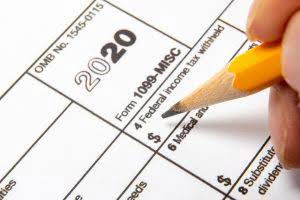- Your cart is empty
- Continue Shopping
The Key Stages of Asset Life Cycle Management

Organizations invest in ALCM because effective asset management extends an asset’s value beyond its useful life. Many companies find that tracking the actual information after the purchase is more complicated than preparing the initial acquisition estimate. Yet there’s much to gain for companies that choose to track the asset costs after its acquisition. Many assets have increased operational and maintenance costs as they near the end of their useful life. A trend of an asset’s costs over its life can be compared to a typical pattern for this asset. Using this type of analysis can lay a foundation for planning for capital budgeting.
Outsourced Fixed Asset Management Services
This can significantly reduce the likelihood of costly emergency repairs and also help you plan for timely upgrades to keep all assets, especially technology assets, up-to-date and efficient. With RedBeam asset tracking software, you can see exactly when each asset was acquired to help design a maintenance and replacement plan. An asset’s lifecycle refers to the stages it goes through, from acquisition to disposal. This cycle covers planning, acquiring, deploying, operating, maintaining, and finally, disposing or renewing each individual asset. Regularly update records through physical inventories, ensure detailed and accurate descriptions, and integrate the system with financial accounting software for consistency and accuracy.
- Depreciation reflects the gradual reduction in the asset’s value over time, accounting for wear and tear, technological obsolescence, and other factors.
- Businesses rely on their assets to generate revenue, and poorly managed assets can lead to significant financial losses.
- GoCodes ensures our customers achieve success in their asset management projects every time.
- Understanding fixed asset useful life is crucial for effective depreciation and asset management within an organization.
- Accounting software applications provide businesses with more control over their financial records, improved data accuracy, and enhanced data security.
Fixed Assets Vs Current Assets and Intangible Assets
Managing work orders is arguably the most critical aspects of maintenance management, so it’s important to get it right. In this article, we discuss common key performance indicators (KPIs) that show the effectiveness of your work order management process and identify areas for improvement. The process then continues throughout an asset’s useful life before it is considered to be fully depreciated. Assets are disposed of, recycled, or replaced once they’ve reached the end of their useful life and the process begins again. To be able to manage values in asset accounting for a fixed asset, an asset master record is needed.

Asset Maintenance Management Software
While FAR is adequate for preparing the statements for accounting, a complete view of the assets isn’t possible. Asset life cycle management is the strategic approach to overseeing an asset throughout its entire life span. The goal is to ensure that the asset provides value, operates efficiently, and is eventually retired or replaced in a way that’s cost-effective and sustainable. The amount of this asset is gradually reduced over time with ongoing depreciation entries. This yields a monthly depreciation charge, for which the entry is a debit to depreciation expense and a credit to accumulated depreciation.
- Mismanagement in this stage can lead to accounting errors and compliance risks, especially in processes involving intermediary accounts or long-term projects.
- Even in this final stage, effective LCAM can yield significant cost savings and mitigate potential risks.
- 11 Financial may only transact business in those states in which it is registered, or qualifies for an exemption or exclusion from registration requirements.
- One of the team’s main observations was that the Group wasn’t able to fully utilize the FAR module.
- Your land, machinery, trucks and vehicles, your computers and printers—they’re all part of your company’s fixed assets.
This means less manual work for you and more time to concentrate on what truly matters. This ensures you always have up-to-date and accurate information at your fingertips. Plus, regular asset audits and inventory checks will help fixed asset accounting you spot any discrepancies early on, making it easier to investigate and address issues before they become costly problems. Without it, you could face unplanned downtime, equipment failures, lost inventory, and even fines.
The process doesn’t end with purchase; assemble, test for flaws, and then work proactively with your maintenance team to identify any future replacement needs, ensuring a smooth operation and longevity of your assets. Fixed asset management encompasses various practices to oversee and optimize an organization’s assets. An efficient disposal process helps minimize losses and ensures compliance with legal and financial standards. Physical verification of assets is the process of confirming the existence, location, and condition of an organization’s fixed assets. It allows companies to create, assign, and track maintenance tasks, ensuring that issues are resolved promptly. From breakdown requests to routine inspections, work orders ensure that maintenance activities are systematically managed.
- Fixed Asset Life Cycle Accounting principles guide the recognition of gains or losses, ensuring consistency, transparency, and compliance with accounting standards.
- Understanding useful life is paramount for businesses as it directly influences financial planning, depreciation calculations, and overall asset management.
- LCAM is integral to financial planning as it provides a comprehensive view of an asset’s costs and value over its life cycle.
- Fixed asset management refers to the process of tracking and managing a company’s physical assets, such as equipment, buildings, and vehicles, throughout their entire lifecycle.
- Repairs and maintenance services can extend the life of an asset, but eventually, it will need to be replaced, as the repairs may outweigh the cost of a new asset.
- It also includes striking a balance between the costs and the threats against the performance level of the assets, which is important to get the maximum ROI and to maintain organizational goals.
Foster a culture of continuous improvement to adapt to new challenges and opportunities. Failing to properly account for depreciation and impairment can lead to overstating asset values, which distorts financial health and can mislead stakeholders. Businesses rely on their assets to generate revenue, and poorly managed assets can lead to significant financial losses. So if they have purchased the excavator for $120,000, they spread out the cost as $40,000 over 3 years and pay tax for the depreciated amount each year. Control your assets easily with Asset Infinity & keep track of every valuable assets used to run your business. This organized information enables you to maximize the utilization of your assets and make sure they’re well taken care of, thus prolonging their useful life.

RFID vs. Barcode: A Comparison of Two Widely Used Asset Tracking Technologies – Differences, Pros & Cons, Use Cases
Yet in many cases, the post-acquisition costs of an asset can exceed the initial costs of an asset, creating a significant financial obligation over the life of an asset (see Figure 1). Companies that have a better understanding of the full cost of an asset can make better decisions regarding maintenance plans, replacement of equipment, and ongoing support. For most of the asset project managers, the only step in the process they were responsible for was completion of the asset creation form. At times, project managers didn’t understand some of the fields on the form or how the information was used downstream.
Predictive maintenance uses AI and machine learning to anticipate and prevent potential asset failures. Sustainability and circular economy principles promote environmentally friendly asset management. Applied across various sectors, from manufacturing and real estate to IT and the public sector, LCAM enhances operational efficiency, financial planning, risk management, and service delivery.


